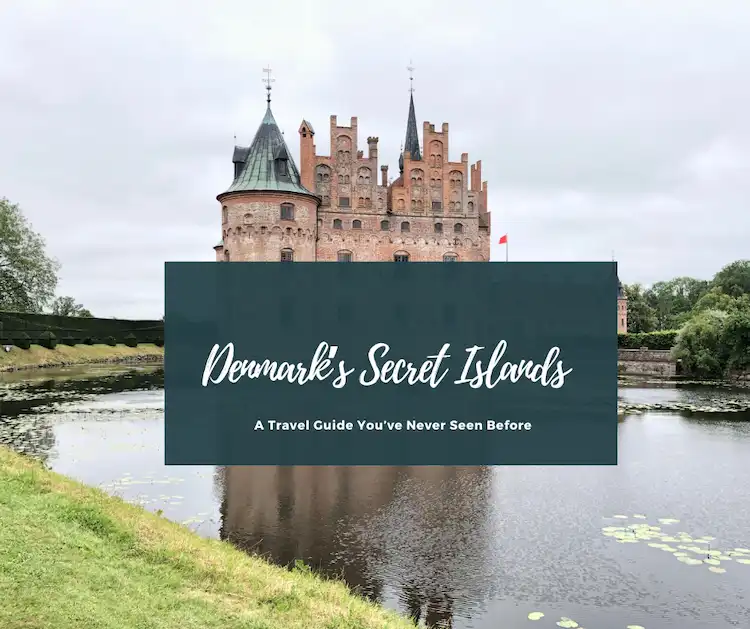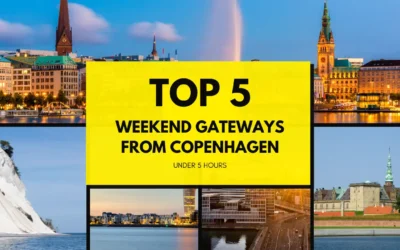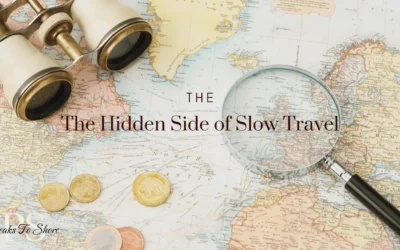Most travelers know Denmark for Copenhagen’s colorful canals or Aarhus’s creative energy—but did you know that Denmark is actually made up of over 400 islands? And many of them are secret escapes hiding just beyond the tourist trail. As someone who’s spent years living in and exploring this northern gem, I can tell you: the real magic begins when you venture off the mainland.
In this blog, I’m pulling back the curtain on Denmark’s secret islands—those tranquil, postcard-worthy spots that even many Danes don’t talk about. Whether you’re craving serene beaches, local heritage, or just the joy of island-hopping on quiet ferries, this guide will take you deep into the best of hidden Denmark.
So let’s get lost—on purpose.
🏝️ 1. Ærø: The Fairytale Island You’ve Never Heard Of
This isn’t your average Danish village. Ærøskøbing, the main town on Ærø Island, looks like it was pulled straight from a storybook. Think cobblestone streets, color-washed houses, and blooming roses around every corner. It’s not just quaint—it’s deeply Danish.
I biked the entire island in a day, passing sheep-filled fields, old lighthouses, and hidden beaches where I was completely alone. Ferries leave from Svendborg and Fynshav, and in summer, Ærø becomes a peaceful haven for artists, couples, and slow-living seekers.
How to Get There:
Ferries depart regularly from Svendborg on Funen. Biking is highly recommended, and rentals are available near the ferry port.
Pro Tip:
Visit in spring or early autumn to enjoy the island’s charm without summer crowds.
👉 Read about Moving to Denmark: What They Don’t Tell You
🌊 2. Samsø: Denmark’s Green Island Pioneer
Samsø isn’t just charming—it’s famous for being 100% powered by renewable energy. You’ll feel it in the air: clean, crisp, and fresh off the Kattegat Sea. The island is known for its organic farming, open skies, and quiet coastal walks.
Explore the sleepy harbor town of Ballen, grab fresh strawberries from roadside stands, and hike up to Issehoved for sweeping views. Even in peak season, Samsø feels slow-paced and local.
How to Get There:
Take the ferry from Hou (Jutland) or Kalundborg (Zealand). It’s a short, scenic ride.
Pro Tip:
Don’t miss the local Samsø potatoes—arguably the best in Denmark.
🌐 Learn about Samsø’s sustainability success on VisitDenmark
🐚 3. Læsø: Salt, Saunas & Secluded Shores
Læsø sits way up in the Kattegat Sea, and it’s unlike anywhere else in Denmark. This island is famous for its sea salt—harvested using medieval techniques—and its seaweed-roofed cottages.
When I visited, I stayed in a converted salt worker’s house and took a seaweed sauna right on the beach. It was weird, wonderful, and totally rejuvenating. The beaches here are some of Denmark’s best-kept secrets.
Must-Do Experiences:
- Seaweed sauna sessions
- Læsø Salt Works tour
- Beachcombing on Østerby strand
📌 Læsø Salt Works official website
🛶 4. Tunø: No Cars Allowed
You won’t hear any engines on Tunø—cars aren’t allowed. Just bicycles, carts, and your own two feet. Located off the east coast of Jutland, Tunø is small, peaceful, and beloved by Danish families looking for a digital detox.
The hike around the island’s edge takes about two hours and offers dramatic sea views and wildflower fields. At night, the stars pop like nowhere else. It’s one of the most peaceful places I’ve ever slept.
Must-Have Info:
- Ferries depart from Hou (near Odder)
- There are no ATMs, so bring cash
- No cars allowed—plan to walk or cycle
🌍 Find ferry times and local info
🌿 5. Fur: Denmark’s Fossil Island
Fur is geologically special—you’ll find clay cliffs, fossil-rich rock formations, and small artisan breweries all on the same island. It’s a favorite among Danish geology buffs and families who come here to dig for ancient fish fossils.
Even if science isn’t your thing, the natural beauty here is something else. Think high cliffs, crashing waves, and quaint rural lanes that end at small, windswept beaches.
Pro Tip:
Head to Knudeklint for the most photogenic cliff walks and fossil finds.
🍺 Explore Fur Bryghus for local beer tasting.
🚴 6. Fanø: Seals, Bunkers & Kite Buggies
Just a short ferry from Esbjerg, Fanø blends wide beaches with war history and wildlife. This is where you’ll see real seals lounging on sandbanks, WWII bunkers tucked in the dunes, and massive beaches perfect for biking and kite surfing.
The annual Fanø International Kite Festival is a blast of color in the summer sky—and totally worth timing your visit around.
Pro Tip:
Rent a fat-tire beach bike for the full Fanø experience.
🌺 7. Strynø: Tiny But Mighty
Located in the South Funen Archipelago, Strynø has just a few hundred residents—but what it lacks in size, it makes up for in heart. The island has an impressive Maritime Education Center and a laid-back, eco-conscious community.
I stayed at a local guesthouse and kayaked around the island with a group of friendly Danes. The sunsets here? Unreal.
How to Get There:
Catch a ferry from Rudkøbing on Langeland. Ferries are small but frequent.
🛶 Find kayaking routes and tours
🐦 8. Møn: Cliffs That Take Your Breath Away
The Møns Klint chalk cliffs are some of the most dramatic natural sights in all of Denmark. Towering white cliffs dive into turquoise seas, with hiking trails zigzagging through beech forests above.
Møn is also a Dark Sky Park, so if you’re into stargazing, this is one of the best spots in Northern Europe. The island has cute little B&Bs, artist studios, and hidden beaches.
Must-Do Activities:
- Stargazing at Dark Sky Møn
- Hiking the cliff paths
- Visiting GeoCenter Møns Klint
🧭 FAQ: Everything You Need to Know
Q: Can I visit these islands year-round?
A: Most islands are accessible year-round, but ferry schedules can be limited in winter. Always check in advance, especially outside summer.
Q: Do I need to rent a car?
A: Not necessarily. Many islands are small and best explored by bike or foot. Islands like Tunø don’t allow cars at all.
Q: Are these islands family-friendly?
A: Absolutely. Places like Fur, Fanø, and Samsø are particularly great for kids, with open nature, beaches, and activities.
Q: Can I camp or wild camp?
A: Wild camping isn’t legal in most places, but many islands have great campgrounds or shelters. Look up “shelterpladser” for free overnight spots.
Q: What should I pack?
A: Waterproof layers, good walking shoes, snacks (shops can be rare), and cash for places without card readers.
Q: How long should I stay?
A: You can do a day trip to most, but staying overnight gives a richer experience—sunsets, quiet mornings, and local encounters.
Final Thoughts
Visiting these islands made me realize just how much of Denmark remains untouched and undiscovered. Have you ever felt like the most exciting places are often hidden in plain sight? That’s exactly how I felt while exploring these secret islands. If you’re tired of the usual tourist circuit, why not consider venturing off the beaten path? These secret islands offer something more personal, more intimate, and more inspiring.
Next time you’re booking a trip to Denmark—skip the mainland rush. Why not hop on a ferry and slow down? The real magic lies in these quiet, secluded places where the stress of city life is left far behind. Imagine waking up to the sound of birds, cycling through open fields, or watching a stunning sunset all to yourself.
So, how about it? Do you want to experience the true heart of Denmark? Would you be ready to take the leap and explore these hidden islands? I promise you won’t regret it.







0 Comments